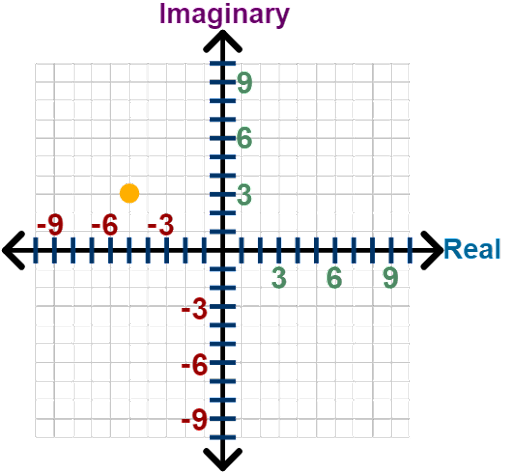
Unraveling the Mysteries of Complex Numbers: A Comprehensive Guide
Comprehensive Definition, Description, Examples & Rules
Introduction
Complex Numbers are an element of the number system in mathematics that deals with square and cubic roots of negative numbers. With the help of complex numbers, mathematicians solve polynomial equations which do not have real roots.
Complex Numbers paved the way for better understanding and progress of multiple fields. Today, we see the application of complex numbers in many fields like Electronics, Electromagnetism, Signal Processing, Quantum Mechanics, and many more.
Understanding Complex Numbers
Definition of Complex Numbers
A complex number is a number that consists of a combination of Real and Imaginary numbers. It can be written in the format ‘a+ib’ where ‘a’ is the Real Number (Re), ‘ib’ is the Imaginary Number (Im), and ‘i’ is called iota. The value of i is (√-1).
For example, in the Complex Number (z)= 9+7i, the Real Number is 9, and the Imaginary Number is 7i.
Real vs. Imaginary Numbers
A Real Number is a number that exists in the number system as positive, negative, 0, an integer, rational, irrational number, fraction, etc.
For example, -3,-9/190, 0, √9, 12, 89/96, etc. are real numbers.
Any number that is not real is an Imaginary Number. When we try to square an Imaginary Number, it will generate a negative result.
For example, the square of √-17 will be -17. Numbers like √-99, √-25, √-3, etc. are Imaginary Numbers.
Complex Numbers were discovered to solve equations that do not have real roots. Thus, when we solve any equation using complex numbers, the result will be imaginary roots.
To better understand the format of complex numbers, please go through the following table:
Complex Number (z) | Real Number (a) | Imaginary Number (ib) |
8+9i | 8 | 9i |
-5+6i | -5 | 6i |
-3-2i | -3 | -2i |
4 | 4 | 0i |
Representation on the Complex Plane
Since the complex numbers consist of the real part (Re) and imaginary part (Im), they can be plotted on an Euclidean plane, where [(Re), (Im)] is considered as a pair just like (x,y). Concerning complex numbers, this Euclidean plane is called the Complex Plane or Argand Plane. The x-axis depicts the real part whereas the y-axis represents the imaginary part.
The process of plotting complex numbers on a graph is identical to the process of plotting points on a (x,y) graph.
Exploring Imaginary Numbers
With real numbers, you will always get a positive result after squaring them, for example, 42= 16 and (-4)2= 16. However, the case with imaginary numbers is different on squaring, the result is always negative.
For example, (√-4)2= -4 or (√-9)2= -9. Thus, imaginary numbers are defined as numbers that produce a negative result on squaring.
The imaginary part, depicted by ‘i’, is called iota. The value of ‘i’ is always (√-1). Therefore, you write 9i as [9*(√-1)] or (√-9). Imaginary numbers do not exist, but since we want them, we imagine them.
Real-World Examples of Imaginary Numbers
Imaginary numbers play a crucial role in our daily lives. Many machines and processes run on these imaginary numbers effortlessly. The applications of Imaginary Numbers are visible in the following fields:
- Signal Processing: Imaginary numbers are applied to cellular and wireless technology, radars, and even biology to measure brain waves. Since the waves are of sine and cosine, it is easy to use imaginary numbers.
- AC Current Analysis: Alternating Current or AC continuously changes between the positive and negative in a sine waveform. The use of imaginary numbers makes the calculations easy to avoid energy loss and cases of electrocution.
There are other uses of imaginary numbers as well, but two uses are directly applicable to our daily lives.
The Exponential Form of Complex Numbers
Complex numbers can be categorised into three forms, Standard or Rectangular, Polar, and Exponential Form. Out of these three, the standard/rectangular form is the easiest and least complicated method of representing complex numbers. However, we can convert a complex number in general or rectangular form to polar or Exponential Form.
The three forms of complex numbers are as follows:
- Rectangular/Standard Form: a+ib
- Polar Form: r(cosθ+isinθ)
- Exponential Form: reiθ
Conversion from Standard to Exponential Form
To convert a complex number from general form to polar or exponential form, we need the values of r and θ. Here, r is the modulus of z; |z|= √(a2 +b2) and θ is the amplitude or argument of z, and eiθ = (cosθ+isinθ) that is known as Euler’s Formula.
First, we convert the general form of a complex number to polar form with the help of an example:
We will take the complex number 1+ √3i.
1= r cosθ
√3= r sinθ
r= |z|= √(12+(√3)2)= 2
Therefore, cosθ= ½ and sinθ= √3/2
Thus, θ= π/3
Therefore, Polar form is z= 2[cos(π/3)+i*sin(π/3)]
To convert the complex number 1+ √3i into exponential form, we will directly put the values of r and θ, and we get:
z= 1+ √3i= 2ei(π/3)
Application and Advantages
The exponential form of complex numbers is used in engineering, mainly computer science, and civil and mechanical engineering. The advantage of using the exponential form is that it facilitates faster calculation when it comes to the multiplication and division of complex numbers as compared to the standard or rectangular form.
Step Up Your Math Game Today!
Free sign-up for a personalised dashboard, learning tools, and unlimited possibilities!

Key Takeaways
- ‘z’ represents Complex Numbers.
- Complex numbers are of the form a+ib.
- ‘i’ is known as Iota.
- The value of i is √-1.
- You can operate all basic arithmetic operations on Complex Numbers.
- There are three forms of complex numbers:
- Standard/Rectangular Form
- Polar Form
- Exponential Form
Quiz
Question comes here
Frequently Asked Questions
It is an equation that consists of a Real number and an imaginary number that’s represented by ‘z’ and the form ‘a+ib’.
To convert a complex number into its exponential form, we first need the value of ‘r’. The value of r is equal to √(a2 +b2). With the help of r, we get the value of θ. When we have the values of r and θ, we put these values in Euler’s Formula, which will give us the value of eiθ. Substituting the value of eiθ in the formula, ‘reiθ’ will result in the exponential form of a complex number.
You can perform all basic arithmetic operations, i.e., Addition, Subtraction, Multiplication, and Division with Complex Numbers.
Real-world applications of complex numbers are Signal Processing, AC Current Analysis, Quantum Mechanics, 2D image representation, and design.


